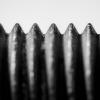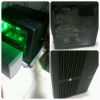-
Posts
1,848 -
Joined
-
Last visited
Reputation Activity
-
 hawaiims got a reaction from da na in Experiences with non-techies
hawaiims got a reaction from da na in Experiences with non-techies
torrents are generally not a good idea to give out to non "techies" because the average pleb will download torrents filled with viruses.
-
 hawaiims got a reaction from Archon42 in Huge list of failure rates for all PC components!
hawaiims got a reaction from Archon42 in Huge list of failure rates for all PC components!
Please use the search function in your browser (Control+F) to find particular brands or models. My apologies if there are strange translations errors due to my English level.
And feel free to share this stuff with your friends!
(Article for the 11th period)
The conclusion part is still being edited.
Introduction:
If there is an unknown when being recommended and buying a product, it's the reliability of the product. The reputation of the manufacturer is there to reassure us, but from one model to another, the reliability can vary tremendously, and even well known manufacturers are not saved from having slip-ups.
Even though as we say in financial markets past performance is not an indicator of future performance, today we publish part of the statistics on return rates at our disposal. It is important to take a step back when looking at these numbers, after all a decent part of these products have already become obsolete. Nevertheless, these statistics are informative and allow us to point the finger at certain products or manufactures from which we hope improvements will come in the future.
All these numbers come from an unnamed large French online store, which provided the statistics to hardware.fr
How is a product declared defective? There are two possibilities. Either a technician will consider through an exchange such as a phone call with a customer shows that the product does not work, or if there is a doubt, the product in question will be tested to validate the failure of said product.
We have to add that these statistics are limited to products sold by this e-vendor, and returns done specifically to said vendor, which is not always the case because people will sometimes return the product to the manufacturer, however this is a minority of the cases during the first year of a purchase, especially the online retailer will pay for return shipping. Some products however incite direct manufacturer returns through return stickers in the product box, this is notably the case for watercooling kits from Corsair.
Unfortunately there exists no other medium to get more trustworthy statistics. After all, who would believe the return rates given directly from a product's manufacturer?
These return rates concern inventory sold between October 1st 2013 and April 1st 2014, for returns created before October 2014 or in other words 6 months to 1 year of product lifespan. The evolution of return rates generally forms a flattened U shape with a practically flat bottom. These numbers then concern the first part of the product life when return rates are high.
The statistics by brand are based on a minimum of 500 products sold, those by model with a minimum of 100 products sold.
Return rates are compared to the previous article published in April 2014.
Motherboards:
- Gigabyte 2,51% (vs 2,02%)
- MSI 2,65% (vs 2,60%)
- ASUS 2,86% (vs 2,31%)
- ASRock 2,99% (vs 2,27%)
As with the previous period, of note is an increase in return rates due to failure for motherboards. All manufacturers see their rates increase, even if it's in a minor way for MSI. This permits MSI to go from 4th to 2nd place, positions exchanged with ASRock, with Gigabyte staying in the lead. The different manufacturers are however all relatively close to each other.
Here are the 10 most returned models: - 8,80% ASUS Rampage IV Extreme
- 8,05% ASRock AD2550B-ITX
- 7,93% ASRock FM2A88M Extreme4+
- 7,25% ASRock 970 Extreme3 R2.0
- 7,20% ASUS Maximus VI Extreme
- 5,95% ASRock 970 Pro3 R2.0
- 5,93% MSI Z87I
- 5,56% Gigabyte GA-990XA-UD3
- 5,26% ASRock 990FX Extreme3
- 5,06% ASUS Maximus VI Formula
- 5,05% ASRock FM2A55M-VG3
The Rampage IV Extreme was already in the front position 6 months ago. It might be partly to explain due to the important stress it's exposed to as a board for overclocking fanatics, nevertheless the rate is still very high. Other motherboards don't have the same excuse however, we can see that AsRock three AsRock AM3+ models with 4 stateOn note la présence de trois modèles AM3+ ASRock with 4 phase power designs with lower rates.
Broken down by chipset, the failure rate is as follows :
- 3,41% Z87
- 3,17% H87
- 2,83% B85
- 1,71% H81
- 3,55% 990
- 3,80% 970
- 2,55% A88X/A85X
- 2,52% A78/A75
- 2,92% A58/A55
With Intel the failure rate is highest for the highest end chipset, probably due to the fact that it's the one that allows overclocking. Here are the rates obtained by manufacturer for Z87:
- Gigabyte 2,18%
- MSI 3,22%
- ASUS 3,67%
- ASRock 4,25%
Gigabyte is the only to have a lower failure rate on Z87 than it's overall failure rate. In detail here are the return rates for Z87 motherboards:
- 7,20% ASUS Maximus VI Extreme
- 5,93% MSI Z87I
- 5,06% ASUS Maximus VI Formula
- 4,76% ASUS Z87I-PRO
- 4,55% ASRock Fatal1ty Z87 Killer
- 4,42% ASUS Maximus VI Gene
- 4,26% ASUS Z87-PRO
- 4,13% ASUS SABERTOOTH Z87
- 3,65% MSI Z87-G45 GAMING
- 3,48% MSI Z87-G43 GAMING
- 3,37% ASUS Z87-A
- 3,29% ASUS Z87-K
- 2,17% ASUS Z87-PLUS
- 1,92% MSI Z87-GD65 GAMING
- 1,85% MSI Z87-G43
- 1,67% MSI Z87-G41 PC Mate
- 1,39% Gigabyte GA-Z87X-D3H
- 1,14% ASUS GRYPHON Z87
- 0,93% ASRock Z87 PRO3
And for AM3+ motherboards based on AMD 990FX, 990X et 970 chipsets:
- 7,25% ASRock 970 Extreme3 R2.0
- 5,95% ASRock 970 Pro3 R2.0
- 5,56% Gigabyte GA-990XA-UD3
- 5,26% ASRock 990FX Extreme3
- 3,31% ASUS Crosshair V Formula Z
- 3,60% ASRock 970 Extreme4
- 2,14% ASUS M5A97 EVO R2.0
- 1,82% Gigabyte GA-970A-DS3P
- 1,71% ASUS SABERTOOTH 990FX R2.0
PSU:
- FSP Group 0,83% (vs 1,57%)
- be quiet! 0,84% (vs 0,77%)
- Corsair 1,32% (vs 1,52%)
- Cooler Master 1,51% (vs 1,42%)
- Zalman 1,72% (vs 0,84%)
- Thermaltake 1,86% (vs 2,48%)
- Seasonic 2,31% (vs 2,91%)
- Akasa 2,97% (vs 2,39%)
- Cougar 4,74% (vs 1,81%)
FSP Group is back in the lead after having lost it in the previous article. The rate for Cougar has attained pretty high levels getting further away from other manufacturers.
Here are the 5 most returned power supplies for this retailer:
- 5,31% Cooler Master Silent Pro M2 720W 80PLUS Bronze
- 4,70% Akasa Venom Power 750
- 4,69% Akasa Venom Power 850 80PLUS Gold
- 4,46% Cooler Master G550M 80PLUS Bronze
- 4,40% Be Quiet ! System Power 7 700 W 80PLUS Silver
Here are the return rates for power supplies betwen 500 and 550W:
- 4,46% Cooler Master G550M 80PLUS Bronze
- 3,39% FSP RAIDER S550 550W 80PLUS Silver
- 2,48% Zalman ZM-500LX
- 2,26% Akasa Venom Power 550
- 1,84% Zalman ZM-500GS
- 1,54% Cooler Master B-Series 500W
- 1,49% Zalman ZM-500GT 80PLUS
- 1,47% Corsair CX500 80PLUS Bronze
- 1,44% Cooler Master GX 550W 80PLUS Bronze
- 1,35% Thermaltake Smart SE 530W
- 1,06% Be Quiet ! System Power 7 500 W 80PLUS Silver
- 1,03% Corsair Builder Series VS550
- 0,92% Cougar PowerX 550 80PLUS Bronze
- 0,90% Corsair CX500M 80PLUS Bronze
- 0,81% Be Quiet ! Pure Power L8 530W CM 80PLUS Bronze
- 0,80% Be Quiet ! Pure Power L8 500W 80PLUS Bronze
- 0,68% FSP HEXA 500
- 0,68% Cooler Master Silent Pro Gold 550W 80PLUS Gold
- 0,64% Akasa Essential Plus 550
- 0,63% Cooler Master G500 Series 80PLUS Bronze
- 0,00% Fractal Design Integra R2 500W
And now for those between 600 and 660W:
- 3,65% Cougar ST 600
- 3,57% Zalman ZM650-XG 80PLUS Gold
- 2,83% Corsair RM650 80PLUS Gold
- 2,59% Be Quiet ! System Power 7 600 W 80PLUS Silver
- 2,56% Corsair CX600 80PLUS Bronze
- 2,50% Seasonic P-660 Platinum 80PLUS Platinum
- 2,38% Cooler Master G650M 80PLUS Bronze
- 2,21% Corsair CS650 80PLUS Gold
- 1,89% Antec High Current Gamer 620 80PLUS Bronze
- 1,82% Cooler Master Silent Pro M2 620W 80PLUS Bronz
- 1,80% Be Quiet ! Pure Power L8 600W 80PLUS Bronze
- 1,46% Cooler Master G600 Series 80PLUS Bronze
- 1,29% Zalman ZM-600LX
- 0,95% Corsair Builder Series VS650
- 0,72% Akasa Cobra 650
- 0,68% Seasonic X-650 (SS-650KM3) 80PLUS Gold
- 0,59% Corsair CX600M 80PLUS Bronze
- 0,31% Cooler Master B-Series 600W
- 0,00% FSP RAIDER S650 650W 80PLUS Silver
Memory:
- Kingston 0,36% (vs 0,29%)
- Crucial 0,57% (vs 0,41%)
- G.Skill 0,97% (vs 0,91%)
- Corsair 1,20% (vs 1,41%)
For the fifth period in a row, the ranking is unchanged. The failure rate for Corsair, which had increased a bit during the last analysis is going back down.
Here are the five most failure prone memory modules:
- 6,01% Corsair VS SO-DIMM CMSO8GX3M2A1333C9
- 5,12% G.Skill SO-DIMM F3-12800CL9D-8GBSQ
- 5,04% Corsair VS SO-DIMM CMSO8GX3M1A1333C9
- 4,40% Corsair XMS3 CMX8GX3M2A1333C9
- 3,95% Corsair XMS2 TWIN2X2048-6400
Here is more specifically the return rate for 2x4GB DDR3-1600 DIMM kits:
- 3,57% Corsair VS CMV8GX3M2A1600C11
- 3,29% Corsair XMS CMX8GX3M2A1600C9
- 2,75% G.Skill Ares F3-1600C9D-8GAB
- 2,03% G.Skill RL F3-12800CL9D-8GBRL
- 1,96% G.Skill Aegis F3-1600C11D-8GIS
- 1,59% G.Skill X F3-12800CL9D-8GBXM
- 1,48% G.Skill NT F3-1600C11D-8GNT
- 1,42% G.Skill X F3-12800CL9D-8GBXL
- 1,14% Kingston HyperX Genesis KHX1600C9D3K2/8GX
- 0,00% G.Skill X F3-12800CL7D-8GBXM
- 0,67% Corsair Vengeance LP CML8GX3M2A1600C9B
- 0,39% Kingston HyperX Beast KHX16C9T3K2/8X
- 0,33% Kingston HyperX KHX16C9B1BK2/8X
- 0,00% G.Skill Ares F3-1600C8D-8GAB
- 0,00% Kingston HyperX KHX16C9B1RK2/8X
- 0,00% Kingston HyperX Genesis KHX1600C9D3K2/8G
- 0,00% Kingston ValueRAM KVR16N11S8K2/8
Graphics Cards:
- MSI 2,25% (vs 2,10%)
- Gainward 2,67% (vs 1,97%)
- Gigabyte 2,98% (vs 3,64%)
- ASUS 3,00% (vs 1,92%)
- Zotac 3,09% (vs 1,61%)
- Sapphire 4,04% (vs 2,80%)
- HIS 5,09% (N/A)
PNY which until now had the lowest failure rate is not in the ranking any more due to low non Quadro/Tesla sales volumes. Despite an increase in failure rates MSI gets the first place, an increase in failure rates we see across the board. It's HIS's first time in this ranking and it makes a noticeable entry... in last place.
Unfortunately this time way too many models have obtained return rates over 5%:
- 15,23% Sapphire HD 7950 With Boost (11196-19)
- 13,85% HIS R9 280X iPower IceQ X² Boost Clock
- 11,97% ASUS Radeon R9 280X R9280X-DC2T-3GD5
- 11,31% Sapphire Radeon R9 280X Dual-X OC UEFI 11221-07
- 10,88% Gainward GeForce GTX 780 Phantom GLH
- 10,68% MSI Radeon R9 270X HAWK
- 10,00% Gigabyte GV-N78TOC-3GD - GeForce GTX 780 Ti
- 9,24% MSI R7970 Twin Frozr 3GD5/OC BE
- 8,86% MSI R9 280X Gaming
- 8,52% MSI Radeon R9 270X GAMING
- 8,20% HIS R9 280X iPower IceQ X² Turbo Boost Clock
- 8,15% Gigabyte Radeon R9 280X GV-R928XOC-3GD-GA
- 7,91% MSI GeForce GTX 780 Twin Frozr GAMING
- 7,78% Gigabyte Radeon R9 280X GV-R928XOC-3GD
- 7,31% Sapphire Radeon R9 280X Dual-X OC 11221-00
- 7,30% Gainward GeForce GTX 770
- 6,94% Sapphire Radeon R9 270X Vapor-XOC 11217-00
- 6,22% Sapphire Radeon R7 250 1 Go GDDR5
- 5,95% ASUS GTX770-DC2OC-2GD5
- 5,63% Sapphire Radeon R9 290 Tri-X OC 11227-00
- 5,62% Sapphire Radeon R9 290 21227-00
- 5,31% MSI R7950 Twin Frozr 3GD5/OC BE
- 5,15% Gainward GeForce GTX 770 Phantom OC
The four highest failure rates are occupied by cards based on AMD Tahiti chips, but we also find 2 GeForce with numbers in the alarming two digit range. Here are the numbers attained when regrouping the numbers by GPU:
- 2,53% Radeon HD 7850
- 1,66% Radeon HD 7870
- 10,28% Radeon HD 7950
- 7,63% Radeon HD 7970
- 2,81% Radeon R9 270
- 5,79% Radeon R9 270X
- 8,81% Radeon R9 280X
- 6,63% Radeon R9 290
- 5,58% Radeon R9 290X
- 1,57% GeForce GTX 660
- 2,57% GeForce GTX 760
- 3,16% GeForce GTX 770
- 4,75% GeForce GTX 780
- 2,91% GeForce GTX 780 Ti
- 1,33% GeForce GTX TITAN/BLACK
As in the previous period, Tahiti based cards (7950, 7970, 280X) are those which are most often taken back for failure. Litecoin mining might be the perfect excuse for these cards, but it is impossible to find out the impact this has on failure rates. This might partly explain it, but the numbers from the next period (sales form April to October 2014) the 280x are already at 6.83% despite the fact that GPU mining has lost the interest of most. We can then assume that there is a different problem with these cards.
Here are the failure rates obtained by GPU (as always for models selling more than 100 copies):
Radeon R9 270/270X
- 10,68% MSI Radeon R9 270X HAWK
- 8,52% MSI Radeon R9 270X GAMING
- 6,94% Sapphire Radeon R9 270X Vapor-X OC
- 4,95% HIS R9 270 IceQ X² Turbo Boost Clock
- 4,20% Gigabyte Radeon R9 270X GV-R927XOC-2GD
- 4,43% Sapphire Radeon R9 270 Dual-X OC
- 2,72% Sapphire Radeon R9 270X Dual-X OC
- 0,93% MSI Radeon R9 270 GAMING
Radeon R9 280X
- 13,85% HIS R9 280X iPower IceQ X² Boost Clock
- 11,97% ASUS Radeon R9 280X R9280X-DC2T-3GD5
- 11,31% Sapphire Radeon R9 280X Dual-X OC UEFI
- 9,35% Gigabyte Radeon R9 280X GV-R928XOC-3GD-GA
- 8,20% HIS R9 280X iPower IceQ X² Turbo Boost Clock
- 7,79% MSI R9 280X Gaming
- 7,78% Gigabyte Radeon R9 280X GV-R928XOC-3GD
- 5,68% Sapphire Radeon R9 280X Dual-X OC
- 4,80% Sapphire Radeon R9 280X Vapor-X OC
- 4,35% Sapphire Radeon R9 280X Tri-X OC
Radeon R9 290/290X
- 5,63% Sapphire R9 290 Tri-X OC
- 5,62% Sapphire R9 290
- 4,26% Sapphire R9 290X
- 1,98% HIS Radeon R9 290 H290F4GD
GeForce GTX 660
- 2,12% MSI N660 GAMING 2GD5
- 1,78% MSI N660 TF 2GD5/OC
- 1,70% ASUS GTX660-DC2OC-2GD5
- 1,41% MSI N660-2GD5/OC
- 1,40% Gigabyte GV-N660OC-2GD
- 1,30% MSI N660 GAMING 2GD5/OC
- 1,14% ASUS GTX660-DC2OCPH-2GD5
- 0,91% ASUS GTX660-DC2-2GD5
GeForce GTX 760/770
- 7,30% Gainward GeForce GTX 770
- 5,95% ASUS GTX770-DC2OC-2GD5
- 5,15% Gainward GeForce GTX 770 Phantom OC
- 4,97% Zotac GeForce GTX 770 AMP!
- 2,94% Gainward GeForce GTX 770 Phantom 4 Go
- 2,48% Gigabyte GV-N770OC-4GD
- 2,31% MSI GeForce GTX 770 Lightning
- 1,97% MSI GeForce GTX 770 Lightning LE
- 1,76% MSI GeForce GTX 770 Twin Frozr GAMING OC
- 1,20% MSI GeForce GTX 770 Twin Frozr GAMING 4 Go
- 0,97% Gigabyte GV-N770OC-2GD
- 0,59% MSI GeForce GTX 770 N770-2GD5/OC
GeForce GTX 780/780 Ti
- 10,88% Gainward GeForce GTX 780 Phantom GLH
- 10,00% Gigabyte GV-N78TOC-3GD
- 7,91% MSI GeForce GTX 780 Twin Frozr GAMING
- 4,27% Zotac GeForce GTX 780
- 3,73% Gainward GeForce GTX 780 Phantom
- 3,69% ASUS GTX780-DC2OC-3GD5
- 3,00% ASUS GTX780TI-DC2OC-3GD5
- 2,00% ASUS GTX780TI-3GD5
- 1,55% Gainward GeForce GTX 780 Ti
Hard Drives:
- Seagate 0,69% (vs 0,86%)
- Western 0,93 (vs 1,13%)
- HGST 1,01% (vs 1,08%)
- Toshiba 1,29% (vs 1,02%)
Good news for our date, the rates are down across the board except for Toshiba. This one exchanges spots with Western Digital and goes form 2nd to 4th place. We have to precise however that unlike the 3 others, returns for Toshiba can ONLY be done through the retailer, so the number may be a bit inflated. For the 2nd time in a row, there are no hard drives with return rates superior to 5%.
Here are the 5 least dependable models:
- 4,76% WD Black WD4001FAEX
- 4,24% WD Black WD3001FAEX
- 3,83% WD SE WD3000F9YZ
- 2,56% HGST Travelstar 7K1000
- 2,39% Toshiba DT01ACA300
Here is the ranking attained for 3.5" drives sold in more than 100 copies :
2 TB :
- 2,30% Toshiba DT01ACA200
- 1,13% Seagate Desktop SSHD ST2000DX001
- 1,01% WD Green WD20EZRX
- 0,79% Seagate Barracuda 7200.14 ST2000DM001
- 0,77% WD Red WD20EFRX
- 0,70% WD Black WD2003FZEX
- 0,63% WD AV-GP WD20EURS
- 0,56% WD Black WD2002FAEX
- 0,52% Seagate Enterprise Value ST2000NC001
- 0,44% WD SE WD2000F9YZ
- 0,30% Seagate NAS ST2000VN000
- 0,21% WD RE WD2000FYYZ
- 0,00% Seagate Surveillance ST2000VX000
- 0,00% Seagate Enterprise Capacity ST2000NM0033
3 TB :
- 4,24% WD Black WD3001FAEX
- 3,83% WD SE WD3000F9YZ
- 2,39% Toshiba DT01ACA300
- 1,89% Seagate Barracuda 7200.14 ST3000DM001
- 1,50% WD Red WD30EFRX
- 1,12% Seagate NAS ST3000VN000
- 1,08% WD Green WD30EZRX
- 0,57% Seagate Enterprise Value ST3000NC002
- 0,36% Seagate Surveillance ST3000VX000
4 TB :
- 4,76% WD Black WD4001FAEX
- 1,95% WD RE WD4000FYYZ
- 1,87% Seagate NAS ST4000VN000
- 1,67% WD Red WD40EFRX
- 1,58% Seagate Desktop HDD.15 ST4000DM000
- 1,28% WD Green WD40EZRX
- 0,63% HGST Deskstar 7K4000
- 0,00% Seagate Enterprise Capacity ST4000NM0033
SSDs:
- Samsung 0,24% (vs 0,54%)
- Intel 0,27% (vs 0,90%)
- Sandisk 0,29% (vs 0,70%)
- Crucial 0,57% (vs 1,08%)
- Kingston 0,63% (vs 0,72%)
- Corsair 0,87% (vs 0,91%)
Samsung retains the first place, but Intel and Sandisk are a hair away from Samsung. Some will note the absence of OCZ, which was the leading brand for failure rates on these statistics for years. The brand is now barely in sale at the retailer from which we get these numbers.
Here are the 5 SSD models with the highest return rates:
- 3,27% Kingston SSDNow mS200 mSATA 120 Go
- 2,84% Corsair Force GS 240 Go
- 2,54% Corsair Neutron 64 Go
- 1,44% Corsair Force LS 120 Go
- 1,34% OCZ Agility 3 480 Go
Surprise, there is still an OCZ! But it's failure rate remains acceptable this time. In detail here are the failure rates for SSDs 120-128GB 2.5":
1,44% Corsair Force LS 120 Go
- 0,70% Crucial M500
- 0,66% Kingston V300
- 0,66% Corsair Force GT
- 0,45% Sandisk Extreme II
- 0,37% Sandisk Ultra Plus
- 0,29% Kingston HyperX 3K
- 0,29% Samsung 840 Pro
- 0,07% Samsung 840 EVO
- 0,00% Corsair Neutron
- 0,00% Intel 530
- 0,00% Sandisk SSD
Then 240-256 GB :
- 2,84% Corsair Force GS
- 0,71% Kingston HyperX 3K
- 0,68% Crucial M500
- 0,64% Kingston V300
- 0,49% Sandisk Extreme II
- 0,34% Samsung 840 Pro
- 0,32% Sandisk Ultra Plus
- 0,26% Samsung 840 EVO
- 0,00% Corsair Neutron
- 0,00% Intel SSD 335
- 0,00% Intel SSD 530
And finally 480-512 GB :
- 1,34% OCZ Agility 3 480 Go
- 0,27% Samsung 840 EVO
- 0,15% Crucial M500
Conclusion:
Compared to the previous period, failure rates evolved as follows:
(this article is period 11)
- Motherboards 2,82% (vs 2,32% in p10, 1,90% in p9, 1,99% in p8)
- Power Supplies 1,37% (vs 1,36% in p10, 1,50% in p9, 1,45% in p8)
- Memory 0,82% (vs 0,89% in p10, 0,76% in p9, 0,81% in p8)
- Graphics Cards 2,98% (vs 2,23% in p10, 2,10% in p9, 2,13% in p8)
- Hard Drives 0,82% (contre 0,97% in p10, 1,07% in p9, 1,53% in p8)
- SSD 0,44% (contre 0,92% in p10, 1,27% in p9, 3,27% in p8)
The failure rates for Motherboards and Graphics Cards is one again on the rise. In contrario, Memory, Hard Drives and SSDs are in decline while PSUs had a stable rate.
To conclude here is the next period covering sales between April and October 2014 the 5 products having attained the highest return rates per category (with the usual minimum of 100 copies.) These numbers will all increase by the next article, the ownership period not being long enough for our usual 6-12 month ownership cycle, but it already allows us to see some products which may have issues:
Motherboards:
- 5,56% ASRock FM2A75 Pro4+
- 5,21% ASUS H87M-E C2
- 4,96% ASUS Maximus VI Formula C2
- 4,76% MSI Z97 PC Mate
- 4,50% MSI Z87-G41 PC Mate
- 4,38% ASRock Z77 Extreme4
- 4,38% ASUS Z87-PLUS
- 4,31% ASUS Z87I-PRO
- 4,25% MSI Z97 GAMING 5
- 4,19% MSI Z97 GAMING 3
- 4,17% ASUS H97M-E
As a bonus, here are the failure rates so far for Z97 Motherboards:
- 4,76% MSI Z97 PC Mate
- 4,25% MSI Z97 GAMING 5
- 4,19% MSI Z97 GAMING 3
- 2,38% MSI Z97-G45 GAMING
- 2,24% ASUS MAXIMUS VII HERO
- 2,10% Gigabyte GA-Z97-D3H
- 1,54% ASUS Z97-A
- 1,37% ASUS MAXIMUS VII RANGER
- 1,37% Gigabyte GA-Z97X-Gaming 3
- 1,17% ASUS Z97-K
- 0,88% ASUS Z97I-PLUS
- 0,00% MSI Z97 GAMING 7
Power Supplies:
- 8,00% Corsair AX1200i 80PLUS Platinum
- 5,44% Akasa Venom Power 1000 80PLUS Gold
- 3,23% FSP RAIDER S750 750W 80PLUS Silver
- 2,74% Akasa Venom Power 750
- 2,36% Seasonic P-660 Platinum 80PLUS Platinum
500-550W category :
- 2,23% Akasa Essential Plus 550
- 1,75% Corsair CS550 80PLUS Gold
- 1,73% Cooler Master G550M 80PLUS Bronze
- 1,69% Corsair Builder Series VS550
- 1,59% Zalman ZM-500GT 80PLUS
- 1,52% Be Quiet ! Alimentation Pure Power L8-530W CM 80PLUS Bronze
- 1,02% Be Quiet ! Alimentation Pure Power L8 500W 80PLUS Bronze
- 0,94% Be Quiet ! Alimentation System Power 7 500 W 80PLUS Silver (bulk)
- 0,93% FSP HEXA 500
- 0,90% FSP RAIDER S550 550W 80PLUS Silver
- 0,87% Cooler Master B-Series 500W
- 0,73% Akasa Venom Power 550
- 0,57% Cooler Master G500 Series 80PLUS Bronze
- 0,36% Corsair CX500M 80PLUS Bronze
- 0,27% Corsair CX500 80PLUS Bronze
600-660W :
- 2,19% Cooler Master G650M 80PLUS Bronze
- 1,46% Be Quiet ! Alimentation Pure Power L8-630W CM 80PLUS Bronze
- 1,15% Corsair Builder Series VS650
- 1,11% Seasonic X-650 (SS-650KM3) 80PLUS Gold
- 1,09% Corsair RM650 80PLUS Gold
- 1,02% Corsair CS650 80PLUS Gold
- 0,85% FSP RAIDER S650 650W 80PLUS Silver
- 0,82% Be Quiet ! Alimentation Pure Power L8 600W 80PLUS Bronze
- 0,65% Corsair CX600M 80PLUS Bronze
- 0,60% Be Quiet ! Alimentation System Power 7 600 W 80PLUS Silver (bulk)
- 0,55% Corsair CX600 80PLUS Bronze
- 0,28% Cooler Master B-Series 600W
Memory:
- 7,90% G.Skill F3-1333C9D-8GSL (SO-DIMM)
- 6,76% Corsair XMS3 CMX4GX3M1A1333C9
- 5,60% Kingston HyperX Fury 8 Go HX316C10FBK2/8
- 5,08% G.Skill F3-1600C11D-8GSL (SO-DIMM)
- 3,88% Corsair XMS3 CMX8GX3M2A1600C9
Ranking for 2x4GB DDR3 1600 DIMMs:
- 5,60% Kingston HyperX Fury HX316C10FBK2/8
- 3,88% Corsair XMS3 CMX8GX3M2A1600C9
- 1,75% G.Skill NT F3-1600C11D-8GNT
- 1,23% Crucial Ballistix Sport XT BLS2C4G3D169DS3CEU
- 0,94% Corsair Vengeance LP CML8GX3M2A1600C9B
- 0,76% G.Skill Aegis F3-1600C11D-8GIS
- 0,68% Corsair Vengeance LP CML8GX3M2A1600C9
- 0,49% Kingston HyperX Beast KHX16C9T3K2/8X
- 0,47% G.Skill Ares F3-1600C9D-8GAB
- 0,00% Corsair Dominator CMP4GX3M2A1600C9
- 0,00% Corsair Vengeance Pro CMY8GX3M2A1600C9R
- 0,00% Crucial CT2KIT51264BA160BJ
- 0,00% G.Skill NS F3-1600C11D-8GNS
- 0,00% Kingston HyperX black KHX16C9B1BK2/8X
- 0,00% Kingston HyperX Fury HX316C10FK2/8
- 0,00% Kingston HyperX Genesis KHX1600C9D3K2/8GX
- 0,00% Kingston ValueRAM KVR16N11S8K2/8
Cartes graphiques :
- 20,79% Gigabyte GV-N78TGHZ-3GD
- 7,96% Sapphire Radeon R9 290 Vapor-X OC 11227-0
- 6,01% MSI Radeon R9 290 GAMING
- 5,88% Sapphire Radeon R7 250 2 Go DDR3 11215-01
- 5,88% Sapphire Radeon R9 280X Tri-X 11221-14
- 5,79% Sapphire Radeon R9 290 Tri-X OC 11227-00
- 5,45% MSI Radeon R9 290X GAMING
- 5,35% ASUS R9280X-DC2T-3GD5
- 5,17% Sapphire Radeon R9 290X 21226-00Par GPU les chiffres actuels sont les suivants :
- 2,96% Radeon R9 270
- 2,40% Radeon R9 270X
- 3,79% Radeon R9 280
- 3,96% Radeon R9 280X
- 6,07% Radeon R9 290
- 4,76% Radeon R9 290X
- 0,90% GeForce GTX 660
- 1,27% GeForce GTX 760
- 2,26% GeForce GTX 770
- 2,18% GeForce GTX 780
- 4,66% GeForce GTX 780 Ti
- 0,00% GeForce GTX TITAN/BLACK
Par modèle on obtient ces chiffres :
Radeon R9 270/270X
- 3,77% MSI Radeon R9 270X HAWK
- 3,50% MSI Radeon R9 270X GAMING
- 2,82% MSI Radeon R9 270 GAMING
- 1,89% Sapphire Radeon R9 270X Dual-X OC 2 Go
- 1,67% Sapphire Radeon R9 270X Dual-X OC 4 Go
- 1,46% ASUS R9270X-DC2T-4GD5 4 Go
Radeon R9 280/280X
- 5,88% Sapphire Radeon R9 280X Tri-X
- 5,35% ASUS R9280X-DC2T-3GD5
- 3,87% Sapphire Radeon R9 280 Dual-X OC
- 3,16% Sapphire Radeon R9 280X Vapor-X OC
- 3,14% Sapphire Radeon R9 280X Dual-X OC
- 1,83% Sapphire Radeon R9 280X Toxic
Radeon R9 290/290X
- 7,96% Sapphire Radeon R9 290 Vapor-X OC
- 6,01% MSI Radeon R9 290 GAMING
- 5,79% Sapphire Radeon R9 290 Tri-X OC
- 5,45% MSI Radeon R9 290X GAMING
- 5,17% Sapphire Radeon R9 290X
GeForce GTX 660
- 1,16% Gigabyte GeForce GTX 660 GV-N660OC-2GD
- 0,88% MSI GeForce GTX 660 N660 GAMING 2GD5/OC
- 0,63% ZOTAC GeForce GTX 660 Synergy Edition 2GB
- 0,40% MSI GeForce GTX 660 N660 GAMING 2GD5
- 0,00% ASUS GeForce GTX660-DC2OC-2GD5
- 0,00% ASUS GeForce GTX660-DC2OCPH-2GD5
GeForce GTX 760/770
- 2,20% MSI GeForce GTX 760 GAMING 4 Go
- 2,16% Gigabyte GV-N770OC-2GD
- 1,92% MSI GeForce GTX 770 GAMING OC
- 1,87% Gigabyte GV-N770OC-4GD
- 1,82% Gainward GeForce GTX 770
- 1,81% Gainward GeForce GTX 770 Phantom OC
- 1,73% Gainward GeForce GTX 770 Phantom 4 Go
- 1,67% MSI GeForce GTX 770 N770-2GD5/OC
- 1,62% ASUS GTX770-DC2OC-2GD5
- 1,32% MSI GeForce GTX 760 GAMING
- 0,84% MSI GeForce GTX 760
- 0,82% ASUS GTX760-DC2OC-2GD5
- 0,70% Gigabyte GV-N760OC-4GD
- 0,29% Gigabyte GV-N760OC-2GD
GeFore GTX 780/780 Ti
- 20,79% Gigabyte GV-N78TGHZ-3GD
- 3,93% ASUS GTX780TI-DC2OC-3GD5
- 3,56% Gigabyte GV-N78TOC-3GD
- 3,13% Gainward GeForce GTX 780 Phantom
- 3,13% MSI GeForce GTX 780 Ti GAMING
- 2,94% Gigabyte GV-N780OC-3GD
- 2,18% ZOTAC GeForce GTX 780 OC
- 2,16% MSI GeForce GTX 780 GAMING
- 1,47% ASUS GTX780-DC2OC-3GD5
- 0,81% ASUS ROG POSEIDON-GTX780-P-3GD5
Disques durs :
- 3,05% WD Red WD60EFRX
- 2,78% Toshiba DT01ACA300
- 2,38% WD Green WD40EZRX
- 2,14% HGST Ultrastar A7K2000
- 1,85% WD SE WD3000F9YZ
Et par capacité voici les détails des modèles, à commencer par les 2 To :
- 1,40% Toshiba DT01ACA200
- 1,18% WD Green WD20EZRX
- 1,13% Seagate Desktop SSHD ST2000DX001
- 0,92% Seagate NAS ST2000VN000
- 0,83% WD Red WD20EFRX
- 0,80% Seagate Barracuda 7200.14 ST2000DM001
- 0,67% WD SE WD2000F9YZ
- 0,61% WD RE WD2000FYYZ
- 0,38% WD Black WD2003FZEX
- 0,32% Seagate Surveillance ST2000VX000
- 0,00% Seagate Enterprise Value ST2000NC001
- 0,00% Seagate Enterprise Capacity ST2000NM0033
- 0,00% WD AV-GP WD20EURX
Puis les 3 To :
- 2,78% Toshiba DT01ACA300
- 1,85% WD SE WD3000F9YZ
- 1,24% WD Red WD30EFRX
- 1,19% WD Green WD30EZRX
- 1,18% Seagate NAS ST3000VN000
- 0,98% Seagate Surveillance ST3000VX000
- 0,94% Seagate Barracuda 7200.14 ST3000DM001
- 0,00% Seagate Enterprise Value ST3000NC002
Et enfin les 4 To :
- 2,38% WD Green WD40EZRX
- 1,22% WD Red WD40EFRX
- 1,18% WD Black WD4003FZEX
- 1,08% Seagate Desktop SSHD ST4000DX001
- 0,83% Seagate NAS ST4000VN000
- 0,80% Seagate Desktop HDD.15 ST4000DM000
- 0,00% HGST Deskstar 7K4000
- 0,00% Seagate Enterprise Capacity ST4000NM0033
- 0,00% HGST Deskstar NAS
Voici les 5 SSD avec les plus fort taux de retour sur la période à venir :
- 1,89% Crucial M550 256 Go mSATA
- 1,52% Sandisk Extreme II 480 Go
- 1,07% Sandisk Extreme II 240 Go
- 0,75% Crucial M550 128 Go
- 0,74% Sandisk Extreme Pro 240 Go
Et voici les chiffres pour les SSD SATA 2.5" 120-128 Go :
- 0,75% Crucial M550
- 0,50% Crucial M500
- 0,34% Sandisk SSD
- 0,26% Sandisk Ultra Plus
- 0,22% Kingston HyperX 3K
- 0,12% Crucial MX100
- 0,05% Kingston V300
- 0,05% Samsung 840 EVO
- 0,00% Corsair Force LS
- 0,00% Intel 530
- 0,00% Samsung 840 Pro
- 0,00% Samsung 850 Pro
- 0,00% Sandisk Extreme II
Puis les 240-256 Go :
- 1,07% Sandisk Extreme II
- 1,02% Sandisk Ultra Plus
- 0,74% Sandisk Extreme Pro
- 0,34% Crucial M550
- 0,31% Kingston HyperX 3K
- 0,30% Kingston V300
- 0,30% Crucial M500
- 0,26% Crucial MX100
- 0,08% Samsung 840 EVO
- 0,07% Samsung 840 Pro
- 0,00% Intel 530
- 0,00% Samsung 850 Pro
Et enfin les 480-512 Go :
- 1,52% Sandisk Extreme II
- 0,60% Crucial M550
- 0,26% Samsung 840 Pro
- 0,22% Crucial MX100
- 0,09% Samsung 840 EVO
- 0,00% Crucial M500
Thank you as always to the monsieurs at hardware.fr for always putting out great content including this article
PS: hopefully this makes it onto the WAN show like last time!
-
 hawaiims got a reaction from Sithhy in Experiences with non-techies
hawaiims got a reaction from Sithhy in Experiences with non-techies
b... but.. they told me it was "next gen graphics"!
it looks great for design studios and such. When a client comes in you can show your sexy aluminum hunk to the customer instead of a desktop with 20 cables or a laptop with a small screen. That's the only rational reason to get an imac I can find...
Not to mention imacs have laptop class mobile GPUs in them (the crappy GPUs with the M at the end) and you can't even upgrade anything! (even worse than a macbook laptop)
It saddens me when I see people getting an imac for power.
-
 hawaiims got a reaction from BradFuller99 in Cooler Master JAS Mini Sponsored Post
hawaiims got a reaction from BradFuller99 in Cooler Master JAS Mini Sponsored Post
Cooler Master products in an Apple store?.... I never thought I would live to see this day
-
 hawaiims got a reaction from dukethedj in LTT Slogan Suggestion Thread
hawaiims got a reaction from dukethedj in LTT Slogan Suggestion Thread
”LinusTechTips; No tips, just reviews."
"Gone phishing."
"BBBBbbbback it up!"
"The road to my office is a hard drive."
"Membrane keyboards are not my type."
"Eating with Mega-Bites."
"What does the FireFox say?"
-
 hawaiims got a reaction from Rohit Jackdaw in Huge list of failure rates on PC components (French, but I translated nearly everything)
hawaiims got a reaction from Rohit Jackdaw in Huge list of failure rates on PC components (French, but I translated nearly everything)
The huge translation (Please remember to read the introduction below):
because of my mishap, there will actually be 2 translated articles in this post, one from May 2013, and one from October 2013. Having 2 articles from a different time should give you an idea of how manufacturers have improved over 3 years (because articles mention the previous year). I apologize in advance for the confusion that this may cause, but I will denote each section as "Article posted in May 2013" and "Article posted in October 2013"
Please use the search function in your browser (Control+F) to find particular brands or models.
And feel free to share this stuff with your friends!
Introduction:
Article posted on May 10th 2013:
If there is an unknown when being recommended and buying a product, it's the reliability of the product. The reputation of the manufacturer is there to reassure us, but from one model to another, the reliability can vary tremendously, and even well known manufacturers are not saved from having slip-ups.
All statistics come from an unnamed large French online store, which provided the statistics to hardware.fr
How is a product declared defective? There are two possibilities. Either a technician will consider through an exchange such as a phone call with a customer shows that the product does not work, or if there is a doubt, the product in question will be tested to validate the failure of said product.
We have to add that these statistics are limited to products sold by this e-vendor, and returns done specifically to said vendor, which is not always the case because people will sometimes return the product to the manufacturer, however this is a minority of the cases.
The reported failure rates concern products sold between April 1st, 2012 and October 1st 2012, for returns created before April 2013,
Each time, we compared the failure rates to those of our preceding article.
The evolution of the failure rates generally forms a flattened U shape, with very high failure rates in the beginning.
All statistics by brand are based on a minimum sample of 500 sold products and statistics by model have a minimum sample rate of 100, with the largest samples being tens of thousands of sales per brand and thousands for specific products.
Although as we like to say in financial domains, past performance is no guarantee of future performance, we publish today the statistics in our disposition. This type of statistic needs to be viewed with a certain distance, especially because part of these products have now become obsolete. However that doesn't discredit the fact that these statistics are informative and allow us to point the finger at products or manufacturers from which we hope to see improvements in the future.
Article posted on October 30th, 2013:
(Only stuff changed from the May article was posted)
The reported failure rates concern products sold between October 1st 2012, and April 1st, 2013 for returns created before October 2013,
*Please note that obviously not all brands of particular components are noted either because of retailer availability, regional availability or sample sizes that are too small for this large French e-vendor*
Motherboards:
Article posted on May 10th 2013:
Average Failure rates:
- Gigabyte 1,19% (vs 1,77% before)
- ASUS 1,79% (vs 2,34% before)
- ASRock 2,09% (vs 1,67% before)
- MSI 3,05% (vs 2,24% before)
Compared to the previous period, Gigabyte and Asus do better, Asrock and MSI less. Gigabyte is in an obvious lead, while MSI's number surpasses 3%, which is worrying to say the least. If we look more specifically at LGA 1155 Z77 Express motherboards, here is the ranking we get:
- Gigabyte 1,70%
- ASUS 1,87%
- ASRock 1,91%
- MSI 3,57%
A high percentage of the high return rate for MSI motherboards is then related to their Z77 models. Of all models here are the 5 most returned ones:
- 5,88% ASUS Rampage IV Extreme
- 5,59% ASRock H77 Pro4/MVP
- 4,94% MSI Z77A-G45
- 4,10% ASRock 960GM/U3S3
- 4,09% ASUS P8Z68-V Pro/Gen3
Here then, is the reason for the high overall failure rate of MSI boards, the Z77A-G45, one of their models. Without this one, MSI's average plummets to 2.03% on all Z77 boards and 2.19% for the average of all their boards.
Thankfully this seems resolved because the next period (sales between October 2012 and April 2013), the failure rate of the Z77A-G45 drops down to 1.45%. (Read next article posted right below for more info)
Article posted on October 30th, 2013:
Average Failure rates:
- Gigabyte 1,43% (vs 1,19% year before)
- MSI 1,83% (vs 3,05% year before)
- ASUS 1,86% (vs 1,79% year before)
- ASRock 2,09% (vs 2,09% year before)
MSI considerably improved it's rate compared to the previous year, which had a rate of 2.03%. if you were to exclude one of their main model (the Z77A-G45) which had a failure rate of 4.94%. The manufacturer returns from fourth place to 2nd place, and Gigabyte still leads the pack despite a higher failure rate this year.
If we look more explicitly at the failure rates for LGA 1155 Z77 express motherboards, here is the result:
- MSI 1,88%
- ASUS 2,01%
- Gigabyte 2,44%
- ASRock 3,51%
Asrock obtains the worst score with 3.51%. It's failure rate however,is caused mostly by their Z77 boards because without them, Asrock would get a 2% failure rat.
All models combined, here are the 4 models with higher than 5% return rates :
- 7,05% ASRock 970 Extreme3
- 6,19% MSI X79A-GD45
- 6,08% ASRock 990FX Extreme3
- 6,06% ASRock 970 Pro3
We find 3 AM3+ Asrock motherboards who sandwich an LGA 2011 motherboard from MSI.
Power Supplies:
Article posted on May 10th 2013:
Average Failure rates:
- Cooler Master 0,98% (vs 1,01% year before)
- Fortron / FSP Group 0,99% (vs 0,42% year before)
- be quiet! 1,15% (N/A)
- Antec 1,23% (vs 1,17% year before)
- Thermaltake 1,98% (vs 2,36% year before)
- Corsair 2,18% (vs 2,30% year before)
- Seasonic 2,36% (vs 2,20% year before)
The duo with the best rankings stays the same, but their placement is inversed, with a notable increase in FSP failure rates. We also notice the entry of be quiet! in 3rd place. Seasonic obtains last place despite a reasonable failure rate.
Here are the 5 models with the highest return rates during the time period:
- 3,64% Corsair Gaming Series GS600
- 3,59% Corsair CX500 V2
- 3,59% Corsair CX600 V2
- 3,39% FSP (Fortron) HEXA 500
- 3,31% Seasonic S12II-520
Article posted on October 30th, 2013:
Average Failure rates:
- Fortron / FSP Group 0,49% (vs 0,99% before)
- BeQuiet 0,61% (vs 1,15% before)
- Antec 1,33% (vs 1,23% before)
- Cooler Master 1,52% (vs 0,98% before)
- Seasonic 1,6% (vs 2,36% before)
- Thermaltake 1,87% (vs 1,98% before)
- Akasa 1,92% (N/A)
- Corsair 1,96% (vs 2,18% before)
- Cougar 2,41% (N/A)
FSP group takes back the first place it lost during the last article, while Cooler Master goes down in the ranking. Be Quiet improves by one spot, and Cougar enters in last position. Nevertheless none of the rates were catastrophic.
Not a single PSU had more than a 5% return rate during this period, so we will then show the 5 PSUs with the highest return rates:
- 4,86% Cougar ST-350
- 4,76% Corsair CX600 V2
- 4,46% Thermaltake SP-550MPCBEU
- 4,19% Corsair CX500 V2
- 4,13% Cooler Master Silent Pro M2 850
Memory/RAM:
Article posted on May 10th 2013:
Average Failure rates:
- Kingston 0,20% (vs 0,27% year before)
- Crucial 0,39% (vs 0,30% year before)
- G.Skill 0,95% (vs 1,01% year before)
- Corsair 1,18% (vs 1,06% year before)
The rankings stay the same from the previous year. Kingston and G-skill reduce their failure rates, while it increases for Crucial and Corsair.
Here are the 5 products with the most returns:
- 4,92% : Corsair Vengeance 16 GB (4x4) DDR3 1600 CL9
- 4,46% : Corsair Vengeance LP Black 16 GB (4x4) DDR3 1600 CL9
- 4,35% : Corsair Vengeance LP Blue 16 GB (4x4) DDR3 1600 CL9
- 3,46% : Corsair XM3 8 GB (2x4) DDR3 1333 CL9
- 3,31% : Corsair XM3 16 GB (2x8) DDR3 1600 CL11
Corsair apparently had some problems with it's DDR3 kits during this time period, notably vengeance kits.
Article posted on October 30th, 2013:
Average Failure rates:
- Kingston 0,20% (vs 0,20% before)
- Crucial 0,46% (vs 0,39% before)
- G.Skill 0,90% (vs 0,95% before)
- Corsair 1,08% (vs 1,18% before)
For the third consecutive period, the ranking stays the same. Kingston keeps it's very low return rate, while we see a small increase in crucial and a small improvement in G. Skill and Corsair failure rates.
Here again, we don't take see any memory kits with over 5% return rates, nevertheless here are the 5 kits with the highest return rates:
- 4,41% Corsair XMS 4 GB (2x2) DDR3 1333 CL9
- 4,14% Corsair XMS3 8 GB (2x4) DDR3 1333 CL9
- 3,63% Corsair Value Select 8 GB DDR3 1333 CL9
- 2,73% Corsair Mac Memory SO-DIMM 8 GB (2x4) DDR3 1066 CL7
- 2,67% Corsair Vengeance SO-DIMM 16 GB (2x8) DDR3 1600 CL10
Just like the last article we only see corsair models in this ranking, however this time around the models with the highest failure rates are not necessarily the highest end ones (vengeance series).
Graphics cards:
Article posted on May 10th 2013:
Average Failure rates:
- Gainward 1,27% (vs 2,05% before)
- PNY 1,32% (vs 1,56% before)
- Gigabyte 1,54% (vs 1,82% before)
- ASUS 1,69% (vs 1,53%before)
- MSI 1,81% (vs 1,69% before)
- Sapphire 3,51% (vs 1,32% before)
The expression the "first will be the last" holds true in this case compared to the previous year. Gainward gets the lead, with Sapphire in an obvious last position due mostly in part to their 7870 models, which when removed from the equation reduces Sapphire's failure rate to 2.06%.
Here are the models that had return rates higher than 5%:
-15,76% Sapphire Radeon HD 7870 OC Edition 2 GB
- 14,29% Sapphire Radeon HD 7970 OC Edition 3 GB
- 11,88% Sapphire Radeon HD 6770 1 GB
- 11,82% Sapphire Radeon HD 7870 GHz Edition 2 GB
- 7,07% ASUS ENGT520 SL/DI/1GD3/V2(LP)
- 6,98% ASUS GTX680-DC2O-2GD5 2 GB
- 5,80% Sapphire Radeon HD 7970 3 GB
- 5,32% Gigabyte GeForce GTX 560 Ti OC 1024 MB
Other than the 7870, we see that two other Sapphire models surpassed the 10% mark, of which one 7970 (the 11197-01) and one 6770 (the 11189-10).
If we look at the numbers by specific GPU, we obtain :
- Radeon HD 7850 : 2,69%
- Radeon HD 7870 : 12,45%
- Radeon HD 7950 : 5,32%
- Radeon HD 7970 : 7,24%
- GeForce GTX 560 Ti : 1,43%
- GeForce GTX 660 Ti : 3,06%
- GeForce GTX 670 : 3,42%
- GeForce GTX 680 : 2,66%
Certain numbers are very strongly impacted by certain models, which is the case with the 7870s by Sapphire for example. With the 7970, if we exclude the problematic Sapphire model, we get 5.47%
the rate of failure for 7870 lowers considerably, although it's still abnormally high, with sapphire cards still having the problems. In general, we see that GeForce models are more reliable according to this data, notably with an excellent ROF for the GTX 660. Article posted on October 30th, 2013: Average Failure rates: - PNY 0,94% (vs 1,32% before)
- MSI 1,38% (vs 1,81% before) - Gainward 1,61% (vs 1,27% before) - Zotac 1,70% (N/A)
- ASUS 1,81% (vs 1,69% before) - Gigabyte 1,84% (vs 1,54% before) - Sapphire 3,15% (vs 3,51% before) PNY jumps from second to first place, while Sapphire keeps it's last position. We have to however clarify that PNY sales are not often for higher end cards, which are more subject to failure. And as proof that the average ROF doesn't necesarilly give the best idea, the GTX 660 which was the card from PNY with the most returns had a rate of 2.86% MSI also makes a noteworthy improvement to 2nd place, here are the models that obtained failure rates higher than 5%, there are unfortunately many: - 12,67% Sapphire Radeon HD 7850 - 7,44% Sapphire Radeon HD 7870 OC V2
- 7,41% Sapphire Radeon HD 7870 OC V1
- 7,02% Sapphire HD 7950 With Boost (11196-16)
- 6,09% ASUS HD7750-DCSL-1GD5
- 5,82% Sapphire Radeon HD 7870 V1
- 5,65% Sapphire Radeon HD 7870 V2
- 5,30% Gainward GeForce GTX 670
In first place, we don't find the 7870 like we could have imagined from the previous article but the 7850! The Sapphire card apparently suffered from the same problems as the 7870 that we already largely covered. the OC version of the card (7850) is somehow spared and attained 2,39%
The 7870 are still in the high failure ranking however, whether they are the V1 or the V2 that supposedly fixed the issues with the V1. The intruders in this list from Sapphire cards are a fanless Radeon 7750 from Asus and a Gainward 670.
If we take a careful look at the numbers by GPU, we obtain:
- Radeon HD 7850 : 3,74%
- Radeon HD 7870 : 5,48%
- Radeon HD 7870 XT : 4,25%
- Radeon HD 7950 : 5,75%
- Radeon HD 7970 : 5,31%
- GeForce GTX 660 : 1,01%
- GeForce GTX 660 Ti : 2,81%
- GeForce GTX 670 : 2,87%
- GeForce GTX 680 : 1,99%
It is quite easy to conclude that AMD based cards are generally less dependable than their GeForce counterparts. Without completely discreting these numbers however, we have to make note of the fact that Sapphire heavily influences on the 7850 and 7870. Without Sapphire, these cards would have a ROF of 1.5% and 1.64%. The opposite holds true for the 7950 and 7970 cards for which we get a higher ROF when we exclude Sapphire cards, however the sample sizes are rather small.
Hard Drives:
Article posted on May 10th 2013:
Average Failure rates:
- Toshiba 1,15%
- Seagate 1,44% (vs 1,65%)
- Western 1,55% (vs 1,44%)
- Samsung 2,24% (vs 1,30%)
- Hitachi 2,40% (vs 3,45%)
We mixed all formats of hard drives, which means that we were able to add Toshiba to the list despite a rather small amount of 3.5" drives they sold. This Former arrives in 1st position. Of note is the high failure rate jump for Samsung, compared to the lowering in failure for Hitachi.
Here are the 5 discs with the highest failure rates:
- 5,04% WD Caviar Black 1,5 TB (WD1502FAEX)
- 4,94% Hitachi 7K1000.C 1 TB (HDS721010CLA332)
- 4,87% Hitachi 7K3000 2 ToB(HDS723020BLA642)
- 3,57% Seagate Barracuda 320 GB (ST320DM001)
- 3,51% WD Caviar Red 2 TB (WD20EFRX)
If we look specifically at 2 TB drives here are the obtained numbers :
- 4,87% Hitachi 7K3000 (HDS723020BLA642)
- 3,51% WD Caviar Red (WD20EFRX)
- 3,01% Samsung SpinPoint F4 (HD201UI)
- 2,12% WD Caviar RE4 (WD2003FYYS)
- 1,97% WD Caviar Black (WD2002FAEX)
- 1,95% Seagate Barracuda 7200.14 (ST2000DM001)
- 1,30% WD Caviar Green (WD20EARX)
- 1,01% WD AV-GP (WD20EURS)
And the 3 TB drives :
- 2,85% WD Caviar Green (WD30EZRX)
- 2,71% Seagate Barracuda 7200.14 (ST3000DM001)
- 1,89% WD Caviar Red (WD30EFRX)
Article posted on October 30th, 2013:
Average Failure rates:
- Seagate 0,95% (vs 1,44% year before)
- Hitachi 1,16% (vs 2,40% year before)
- Western 1,19% (vs 1,55% year before)
- Toshiba 1,54% (vs 1,15% year before)
Hitachi HGST which was for a long time the definite last place, continues to improves its failure rate ever since it's buyout by Western Digital, but that's in large part due to the the sales of it's high capacity hard drives which significantly lowered (>2TB hard drives). Toshiba sees it's rate decrease, while Seagate improves it's rate which allows it first place.
Warning: Unlike others, Toshiba doesn't allow a direct return to the manufacturers (so it's failure rate might actually be considerably lower if it were to allow them)
Only one disk obtains a failure rate higher than 4% during this time period, it's the Seagate constellation ES 2 with a rate of 9.64%. The failure rate is high, however the sample relatively small.
Here are the rates for 2TB hard drives:
- 9,64% Seagate Constellation ES ST2000NM0011
- 3,38% Western Digital Caviar RE4 WD2003FYYS
- 2,36% Seagate Barracuda Green ST2000DL003
- 1,45% Western Digital Caviar Black 2 WD2002FAEX
- 1,45% Western Digital Red WD20EFRX
- 1,38% Seagate SV35 ST2000VX000
- 1,35% Western Digital Green WD20EZRX
- 1,12% Seagate Barracuda 7200.14 ST2000DM001
- 1,09% Western Digital AV-GP WD20EURS
- 0,96% Western Digital Caviar Green WD20EARX
- 0,83% Western Digital RE WD2000FYYZ
And for 3TB hard drives:
- 1,99% Western Digital Red WD30EFRX
- 1,48% Western Digital Green WD30EZRX
- 1,29% Seagate Barracuda 7200.14 ST3000DM001
(I have no idea why the 1TB hard drive statistics were not in the article)
SSD:
Article posted on May 10th 2013:
Average Failure rates:
- Samsung 0,05% (vs 0,48% before)
- Plextor 0,16% (N/A)
- Intel 0,37% (vs 0,45% before)
- Crucial 1,12% (vs 1,11% before)
- Corsair 1,61% (vs 1,05% before)
- OCZ 6,64% (vs 5,02% before) / 2,92% without Petrol and Octane SATA 2 (vs 3,05% before when Octane and Petrol were not included)
We didn't make any numerical errors with Samsung, which is very impressive. It eclipses the entry of Plextor within the ranking, who also gets a very good score. Be careful however, with it's M3 and M3 Pro because they had a free warranty that allowed returns directly in house, which of course lowered the retailer rates for Plextor. The rate for corsair increased, just like OCZ, which once again ends up dead last.
This rate is in effect strongly affected by two series, the SATA 3 Petrol and the SATA 2 Octane, which are respectively at a 39.79% and 36.13% return rates, a disgrace. Without these two series of OCZ SSDs, their overall rate decreases to 2.92% which still puts them last, but at a much more reasonable return rate (which however still stays inflated by certain series, such as the 7.51% return rate on the Agility 4) while certain other ones fare better (1,89% for the Vertex 3 and 1,46% for the vertex 4).
If we look at models with a higher than 5% return rate, OCZ monopolizes the ranking:
- 52,07% OCZ Octane SATA 2 128 GB
- 45,26% OCZ Petrol 128 GB
- 44,76% OCZ Octane SATA 2 64 GB
- 40,57% OCZ Petrol 64 GB
- 10,23% OCZ Agility 4 256 GB
- 8,70% OCZ Octane SATA 3 256 GB
- 7,41% OCZ Agility 4 64 GB
- 6,85% OCZ Agility 4 128 GB
- 6,59% OCZ Agility 3 90 GB
- 5,56% OCZ Octane SATA 3 128 GB
Thankfully OCZ seems to finally be on the right track after their improvement in the next period.
Article posted on October 30th, 2013:
Average Failure rates:
- Samsung 0,28% (vs 0,05% year before)
- Intel 0,63% (vs 0,37% year before)
- Kingston 1,00% (N/A)
- Corsair 1,88% (vs 1,61% year before)
- Crucial 2,26% (vs 1,12% year before)
- OCZ 2,27% (vs 6,64% year before)
Samsung keeps the first place spot despite the fact that the previous exceptional return rate is not maintained. We find Intel in second, faithful to it's own parts for it's SSD, while Kingston makes an entry in 3rd place. The failure rate of Crucial doubles, and with barely any difference from the former, OCZ comes in at last place. For OCZ it's failure rate lowers strongly with the Octane SATA 2 which was discontinued, without which OCZ's failure rate would have been 2.92% the previous period (compared to 6.64%.)
5 models obtained failure rates higher than 4%:
- 11,19% OCZ Vector 128 GB
- 9,30% OCZ Vector 256 GB
- 5,11% Crucial V4 64 GB
- 4,92% Crucial M4 512 GB
- 4,41% Kingston HyperX 3K 120 GB
When OCZ launched it's vector SSDs, OCZ prided itself by guaranteeing a certain level of reliability, however it shows to be a failure according to these numbers. Even though the sample is not that large, while superior to the 100 samples stated in the introduction, the presence of two capacities of vector SSDs in the rankings validates a problem with the vector. The firmware released in the end of march seems to have fixed a large part of the problems, but the rates stay superior to what we expect of a high end SSD because they are already 3.64 and 3.45%.
Conclusion:
Article posted on May 10th 2013:
Compared to the previous period, return rates evolved as such:
- Motherboards 1,99% (vs 2,01% before)
- Power supplies 1,45% (vs 1,58% before)
- Memory/RAM 0,81% (vs 0,78% before)
- Graphics cards 2,13% (vs 1,77% before)
- Hard drives 1,53% (vs 1,63% before)
- SSD 3,27% (vs 2,39% before)
Of note are a decrease in Power Supply and hard drive failure rates, but an increase in SSD and GPU failure rates. The culprits heavily affected these results (name Sapphire GPUs and OCZ SSDs). In the next period things seem to improve for both of those manufacturers due to the disappearance (discontinuation) of problematic series.
Article posted on October 30th, 2013:
Compared to the previous period, failure rates evolved in this way:
-Motherboards 1,9% (vs 1,99% before)
-Power supplies 1,5% (vs 1,45% before)
-Memory/RAM 0,76% (vs 0,81% before)
-Graphics cards 2,1% (vs 2,13% before)
-Hard drives 1,07% (vs 1,53% before)
- SSD 1,27% (vs 3,27% before)
We noticed that there was a strong improvement in hard drives, a logical consequence that follows the lowering of failure rates in the industry leaders, Western Digital and Seagate. The SSD failure rates also tumbles, the result of a lowered failure rate for OCZ, now thankfully far from the abysmal failure rates of the Petrol and Octane series.
To end this article, here are the 5 products that had the most important amounts of failure rates for each categories between April and October 2013 (all had minimum samples of 100). These rates will be brought to augment by the next update due to the return rate not being important enough during this time period:
Motherboards:
- 5,22% ASRock 970 Pro3
- 5,03% ASRock Z77 Pro3
- 4,39% ASUS Maximus VI Hero
- 4,39% ASUS Rampage IV Extreme
- 3,86% ASRock H87M
Power supplies:
- 3,73% Corsair GS700 2013
- 3,62% Seasonic P-760
- 3,48% Thermaltake SP-650MPCBEU
- 2,83% Cooler Master GX 550W
- 2,82% Cooler Master Silent Pro M2 850
Memory/RAM:
- 4,59% Corsair XMS3 4 GB DDR3 1333 CL9
- 4,06% Corsair Value Select SO-DIMM 8 GB DDR3 1333
- 3,67% G.Skill SODIMM 16 GB (2x8) DDR3 1333 CL9
- 3,61% Corsair XMS 4 GB (2x2) DDR3 1333 CL9
- 3,52% Corsair Vengeance SO-DIMM 16 GB (2x8) DDR3 1600 CL10
Graphics cards:
- 10,34% Gigabyte R795WF3-3GD
- 9,97% Sapphire HD 7950 With Boost (21196-00)
- 5,04% MSI R7970 Twin Frozr 3GD5/OC BE
- 4,93% Sapphire Radeon HD 7870 XT With Boost
- 4,80% MSI N6200-512D2H/LP AGP
- 4,50% MSI N780 TF 3GD5/OC
- 4,27% Sapphire Vapor X HD 7970 GHz Edition
- 4,19% ASUS GTX670-DC2-2GD5
- 4,06% MSI R7950 Twin Frozr 3GD5/OC BE
Hard Drives:
- 3,44% Toshiba DT01ACA300 3 TB
- 2,31% Western Digital Caviar Green 2 TB WD20EARX
- 2,03% WD Black Desktop 4 TB SATA 6Gb/s WD4001FAEX
- 1,83% WD Blue SE Desktop 320 GB IDE WD3200AAJB
- 1,51% Seagate NAS HDD 3 TB ST3000VN000
SSD:
- 6,00% OCZ Vertex 4 256 GB
- 3,65% OCZ Vector 128 GB
- 3,45% OCZ Vector 256 GB
- 2,97% OCZ Vertex 450 128 GB
- 2,83% Crucial V4 128 GB
_________________________________________________________________________________
Source (all in French of course):
May 10th, 2013 article http://www.hardware.fr/articles/893-1/taux-retour-composants-8.html
October 30th, 2013 article http://www.hardware.fr/articles/911-1/taux-retour-composants-9.html
_____________________________________________________________________________________________
I will repeat this again in case you have skipped over this: these statistics are limited to products sold by this large French e-vendor, and returns done specifically to said vendor, which is not always the case because people will sometimes return the product to the manufacturer, however this is a minority of the cases. This means that the actual failure rates are likely higher (the exception being Toshiba hard drives, which can only be returned to the retailer).
Edit: ooooooh s**t, just looks like I translated the wrong article. I translated the one posted in May 2013, while there is an article with newer numbers from October 2013. I'll try to update it to the October one when I have the time.
Edit 7: Intro, Motherboard, Power Supply/PSU were all updated to include both articles and proofread.
Edit 8: Memory/RAM and Graphics cards were updated to include both articles and proofread
Edit 9: Whole thing is finally complete, proofread and all after 4 hours straight of formatting and translating :lol:
I look forward to translating another one of these articles next time they post one (probably in a couple months)
Although these articles are not definitive proof of the superiority of one brand's reliability over the other because they only encompass retailer return rates and are done in a country with considerably less PC builders (France), they should give people a decent idea of particular components that have very high retailer return rates, and I hope these numbers help you perhaps make a decision in your next purchase.
-
 hawaiims got a reaction from .spider. in Canon T5i with OM-D E-M10...
hawaiims got a reaction from .spider. in Canon T5i with OM-D E-M10...
The question is why the hell anybody would consider a canon in 2015. Canon has failed to progress like all the other companies. They rely on their name only while they keep making stuff that is subpar for this day and age. This goes for both their low end DSLRs and their high end ones.
Nikon, Sony, Panasonic, Fujifilm etc.. have made tremendous strides while Canon has just been sitting on their asses for the last couple years.
-
 hawaiims got a reaction from Nineshadow in Canon T5i with OM-D E-M10...
hawaiims got a reaction from Nineshadow in Canon T5i with OM-D E-M10...
The question is why the hell anybody would consider a canon in 2015. Canon has failed to progress like all the other companies. They rely on their name only while they keep making stuff that is subpar for this day and age. This goes for both their low end DSLRs and their high end ones.
Nikon, Sony, Panasonic, Fujifilm etc.. have made tremendous strides while Canon has just been sitting on their asses for the last couple years.
-
 hawaiims got a reaction from GrimNeo in In 2 days I become a Father
hawaiims got a reaction from GrimNeo in In 2 days I become a Father
I thought you already had your kid in Switzerland last week? Wasn't the the reason you were nowhere to be seen for 10 days?
-
 hawaiims got a reaction from techswede in In 2 days I become a Father
hawaiims got a reaction from techswede in In 2 days I become a Father
I thought you already had your kid in Switzerland last week? Wasn't the the reason you were nowhere to be seen for 10 days?
-
 hawaiims got a reaction from DeViLzzz in Editors Keys SL600 Microphone
hawaiims got a reaction from DeViLzzz in Editors Keys SL600 Microphone
I was confused by the title of the video haha. I thought it had something to do with Keys from NCIX using the mic.
-
 hawaiims got a reaction from Techteen14 in In 2 days I become a Father
hawaiims got a reaction from Techteen14 in In 2 days I become a Father
I thought you already had your kid in Switzerland last week? Wasn't the the reason you were nowhere to be seen for 10 days?
-
 hawaiims got a reaction from Snickerzz in Does bidding multiple times on Ebay help you?
hawaiims got a reaction from Snickerzz in Does bidding multiple times on Ebay help you?
That's just the auto bidding system, they aren't actually bidding in $1 increments, but rather someone else is bidding but that person has auto bids set up to a higher price so it just one ups them automatically every time.
-

 hawaiims got a reaction from Guest in Does bidding multiple times on Ebay help you?
hawaiims got a reaction from Guest in Does bidding multiple times on Ebay help you?
That's just the auto bidding system, they aren't actually bidding in $1 increments, but rather someone else is bidding but that person has auto bids set up to a higher price so it just one ups them automatically every time.
-
 hawaiims got a reaction from kayodoc in Good deal? Should I bite or look elsewhere?
hawaiims got a reaction from kayodoc in Good deal? Should I bite or look elsewhere?
Is there any reason you really want a gaming laptop?
For the $1600 dell is offering you, you could easily get both an ultrabook and a very powerful desktop with an r9 290 or GTX 970. You would get two machines as well.
Here's an idea of what you could get for $700. You can easily get a GTX 970 at that price including an SSD and the whole shabang. Keep in mind that the dekstop 970 is a lot faster than a laptop.
http://pcpartpicker.com/p/wjcpJx
if your concern is bringing your computer to friend's houses and whatnot, then you could easily get a very small itx build in an ML07B for not much more than the build above.
-
 hawaiims reacted to MeepLikesToBuildPc's in 2nd hand 280x
hawaiims reacted to MeepLikesToBuildPc's in 2nd hand 280x
Well, these cards are popular for mining E-Coins so be careful because cards that have been used for mining usually dont live long......
-
 hawaiims got a reaction from rhyseyness in Good deal? Should I bite or look elsewhere?
hawaiims got a reaction from rhyseyness in Good deal? Should I bite or look elsewhere?
Is there any reason you really want a gaming laptop?
For the $1600 dell is offering you, you could easily get both an ultrabook and a very powerful desktop with an r9 290 or GTX 970. You would get two machines as well.
Here's an idea of what you could get for $700. You can easily get a GTX 970 at that price including an SSD and the whole shabang. Keep in mind that the dekstop 970 is a lot faster than a laptop.
http://pcpartpicker.com/p/wjcpJx
if your concern is bringing your computer to friend's houses and whatnot, then you could easily get a very small itx build in an ML07B for not much more than the build above.
-
 hawaiims got a reaction from rhyseyness in Good deal? Should I bite or look elsewhere?
hawaiims got a reaction from rhyseyness in Good deal? Should I bite or look elsewhere?
Frankly I think you're asking too much.
You either go for thin, light, long battery life.
or you go for heavy, powerful and large screen.
It's kind of a paradox to ask for a very powerful gaming laptop in a portable form factor.
In my opinion it's a much better idea to get a laptop that does one thing best. So either a very light, very thin laptop for school use etc.. or a very powerful, very big laptop that will be perfect for at home use and going to friend's houses from time to time. By looking at something that's in betwen these two you end up with something that's mediocre in both terms. It's not light or thin enough to be truly portable like an ultrabook, and not a good value performance wise to be a good gaming laptop.
-
 hawaiims got a reaction from VolkA in help me build a ~1500 $ gaming pc please
hawaiims got a reaction from VolkA in help me build a ~1500 $ gaming pc please
Check this thread first and answer the questions in a new post. Can't help you much if we have to ask you 20 questions first.
http://linustechtips.com/main/topic/3061-build-plan-thread-recommendations-please-read-before-posting/
-
 hawaiims reacted to VolkA in help me build a ~1500 $ gaming pc please
hawaiims reacted to VolkA in help me build a ~1500 $ gaming pc please
Where are you from, location? Giving all these information will make it easier for the rest to help you.
-
 hawaiims got a reaction from Valkyrie743 in Need help choosing a new Optical gaming mouse
hawaiims got a reaction from Valkyrie743 in Need help choosing a new Optical gaming mouse
A lot of stuff with mice is up to personal preference. Try to get your hands on them at a store to test them out at least for hand shape and size.
Can't really help you out all too much with something that's so prone to personal preference.
-
 hawaiims got a reaction from Trik'Stari in Asus attacks Apple Watch buyers with flow chart that concludes ‘You are really out of your mind’
hawaiims got a reaction from Trik'Stari in Asus attacks Apple Watch buyers with flow chart that concludes ‘You are really out of your mind’
Both are idiotic
#smartwatchhatemasterrace
-
 hawaiims got a reaction from Nup in Asus mobo Ram?
hawaiims got a reaction from Nup in Asus mobo Ram?
Why would you go Z97 for a budget build? That doesn't really make any sense.
As for RAM basically any 240 pin DDR3 RAM will work. Dual channel or single channel doesn't matter too much.
And yes LGA 1155 is a CPU socket for older intel CPUs. Z97 uses the LGA 1150 socket. RAM doesn't have anything to do with sockets. All that matters is that it's 240 pin and DDR3
-
 hawaiims got a reaction from Lolzious in $150 to spend
hawaiims got a reaction from Lolzious in $150 to spend
Upgrade your audio solution first, it will make a huge difference. The FXD70s are the IEMs I usually recommend under $50 and they are insanely good for the price (go and do some research on them on head-fi if you don't trust me):
http://www.amazon.com/gp/offer-listing/B0081YUE12
A cheap IPS monitor (it'll make a huge difference from a 32" 1080p TV):
http://www.amazon.com/Dell-S2240M-21-5-Inch-LED-lit-Monitor/dp/B009H0XQPU/
Then later down the line I would definitely upgrade the CPU because it might be bottlenecking the GPU a bit. For $150 for CPU+motherboard though it wouldn't be a worthwhile upgrade and frankly what you interact with is more important IMO (meaning mouse, keyboard, screen, audio solution)
-
 hawaiims reacted to TacticlTwinkie in The Ultimate conclusion: 4k vs IPS. vs High end TN
hawaiims reacted to TacticlTwinkie in The Ultimate conclusion: 4k vs IPS. vs High end TN
28ish inch 1440p ips. From experience, that is the sweet spot.



















